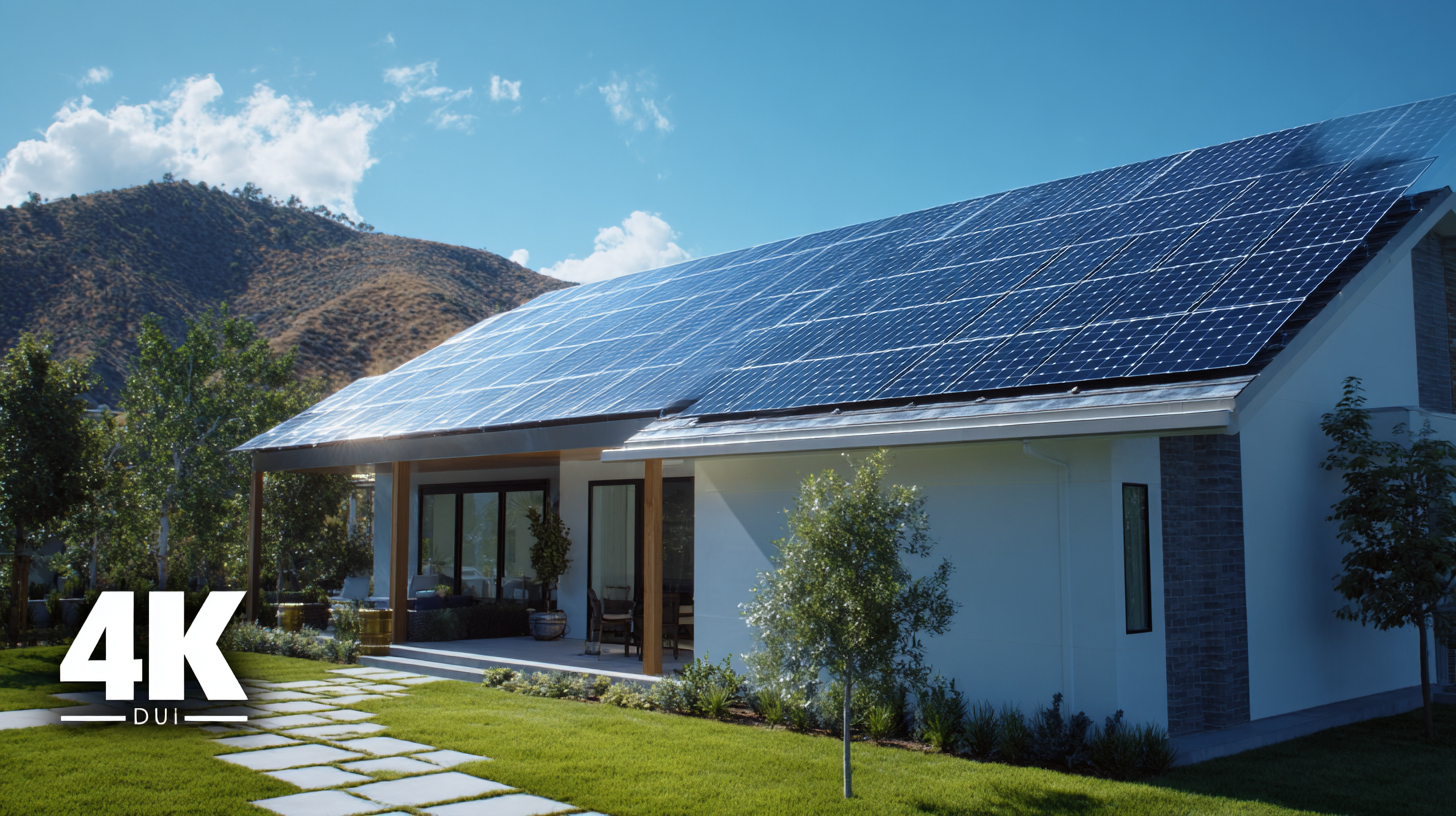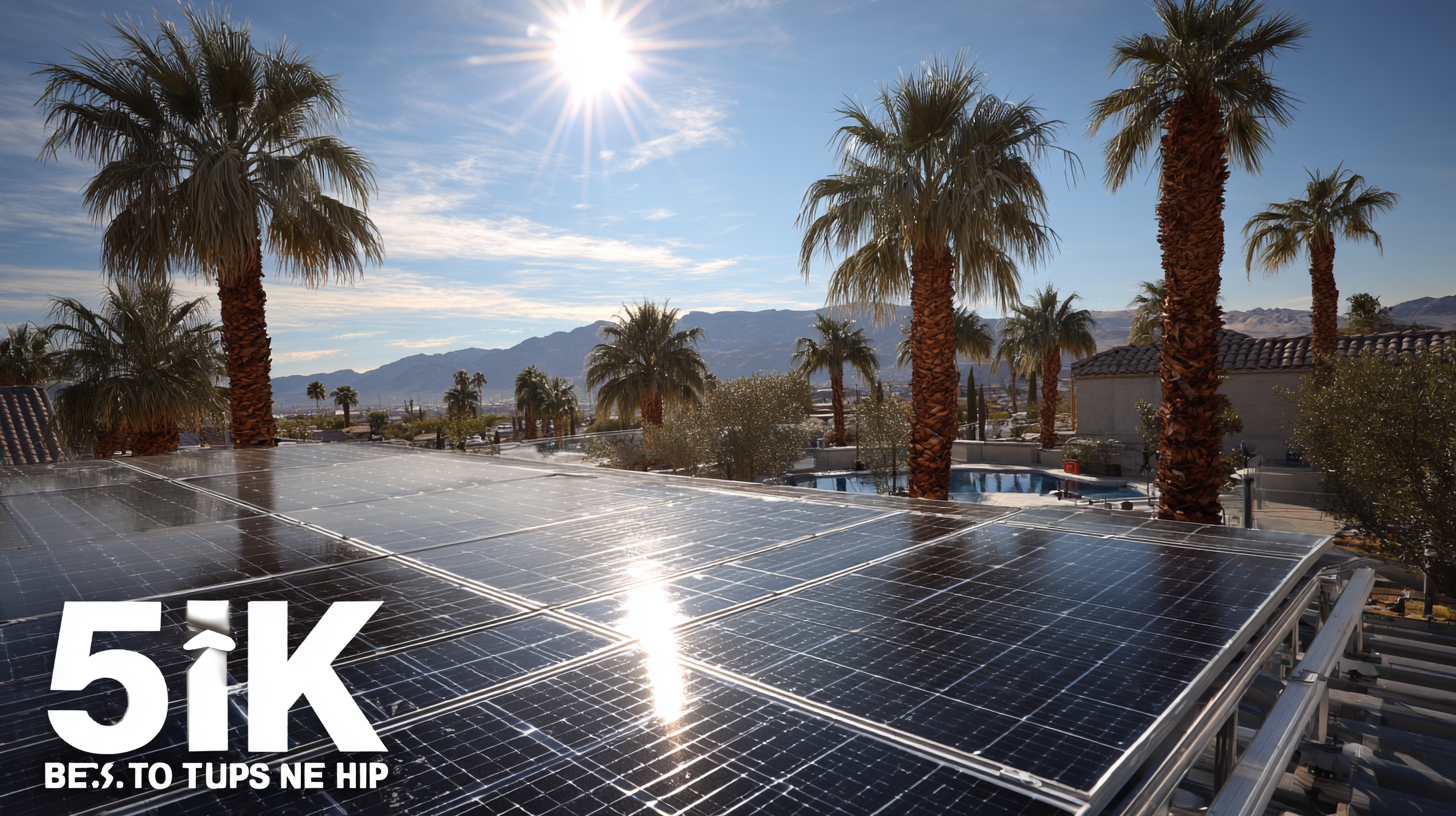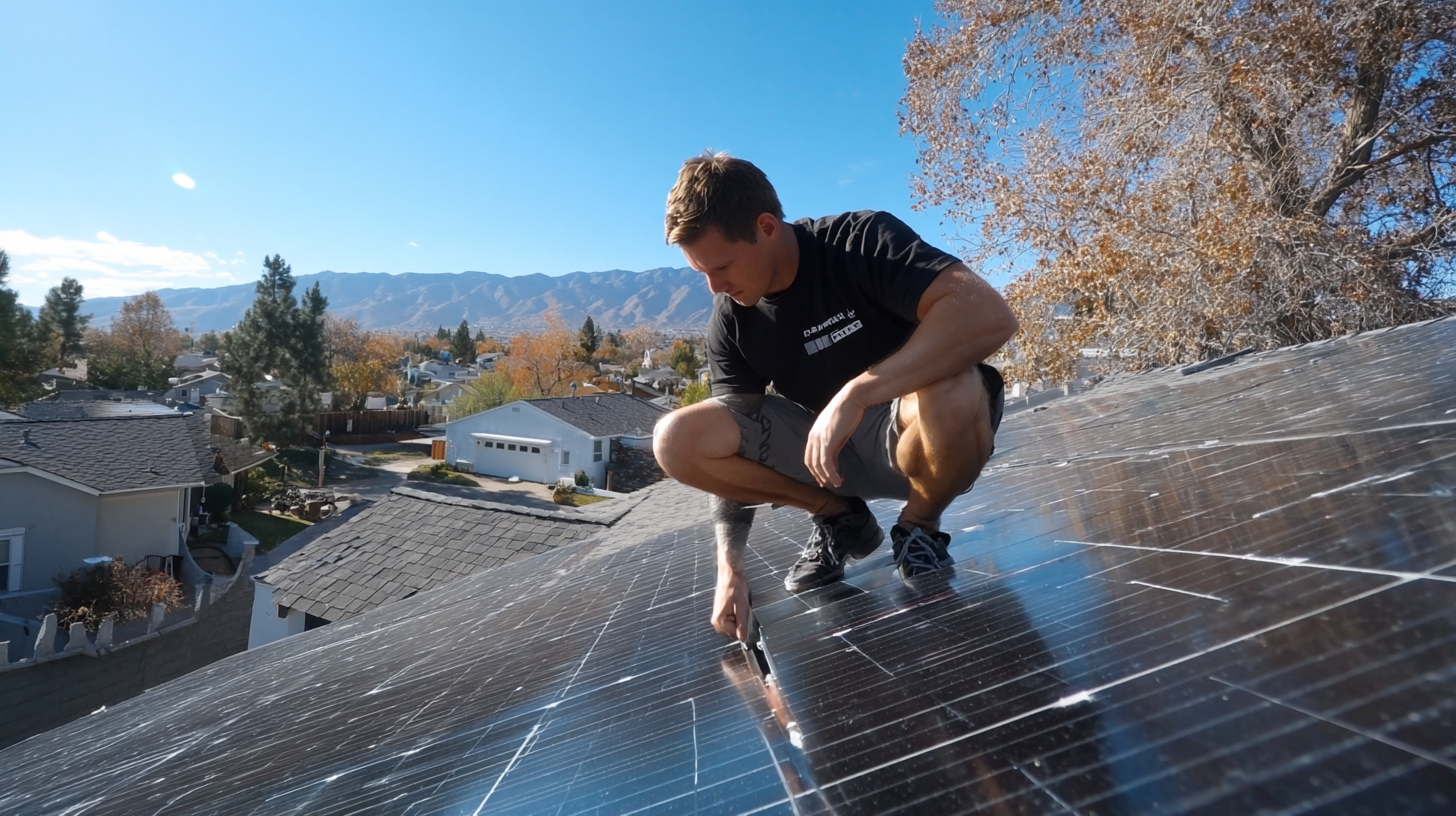As the global shift towards renewable energy accelerates, solar panel installation has emerged as a pivotal solution for combating climate change and reducing energy costs. According to the International Energy Agency (IEA), solar power is set to become the largest source of electricity by 2025, with installations growing at an unprecedented rate. In 2021 alone, a record 168 gigawatts of new solar capacity was added, underscoring the increasing reliance on this sustainable energy source.

Countries like China are leading the charge, with domestic manufacturing capabilities that ensure high-quality products at competitive prices, epitomized by the phrase "中国智造,全球热销,品质保证." To maximize the benefits of solar energy, however, proper solar panel installation remains critical. In this blog, we will explore five essential tips to ensure successful and efficient installation, enabling homeowners and businesses alike to harness the full potential of solar power.
Choosing the right location for your solar panel installation is pivotal to maximizing energy production and ensuring system efficiency. According to the National Renewable Energy Laboratory (NREL), optimizing the orientation and tilt of solar panels can increase energy output by up to 30%. This means that not only is the location important, but also the specific angle at which panels are deployed. Ideally, solar panels should face true south in the Northern Hemisphere to harness the maximum amount of sunlight throughout the day.
Furthermore, shading can have a significant impact on solar panel performance. A study from the Solar Energy Industries Association (SEIA) indicates that shading from nearby trees, buildings, or other obstructions can reduce energy production by as much as 80%. Therefore, conducting a thorough site analysis to identify potential obstructions and understanding the seasonal sun path can lead to better long-term output. For homeowners and businesses alike, taking the time to select a location with ample sunlight exposure and minimal shading can yield substantial energy savings and efficient solar panel performance.
When considering solar panel installation, understanding the various types available is crucial for achieving optimal energy efficiency and cost savings. The primary categories of solar panels include monocrystalline, polycrystalline, and thin-film solar panels. According to a report by the Solar Energy Industries Association (SEIA), monocrystalline panels, although typically more expensive, provide higher efficiency rates—ranging from 15% to 22%—and require less space compared to their polycrystalline counterparts, which usually have efficiency rates between 13% to 16%. This makes monocrystalline panels a popular choice for homeowners with limited roof space.
On the other hand, thin-film solar panels offer a lighter, more flexible option that can be integrated into various surfaces, though with generally lower efficiency rates of 10% to 12%. However, they are often seen as a viable solution in specific applications, such as large-scale solar farms where space is less of a concern. Additionally, research from the National Renewable Energy Laboratory (NREL) indicates that choosing the appropriate solar panel type can influence the long-term performance and payback period of an installation, highlighting the importance of understanding these distinctions in your solar energy journey.
When considering solar panel installation, evaluating your roof's structure and material is crucial for ensuring optimal performance and longevity. A sturdy roof not only supports the weight of the solar panels but also determines their efficiency based on angle and orientation. Ensure your roof is in good condition before proceeding with installation. If your roof requires repairs or is nearing the end of its lifespan, it may be wise to address those issues first to avoid unnecessary complications.
To assess whether your roof is suitable for solar panels, consider the material. Some materials, like asphalt shingles, are ideal for solar panel installation due to their durability and ease of mounting. However, if your roof is made of clay tiles or slate, you may need specialized mounting systems or additional reinforcement to protect the roof structure. Additionally, check for shading from trees or nearby buildings; panels require abundant sunlight to generate energy effectively.
Finally, monitor the age and condition of your roof. Most roofing materials last 20-30 years, and if your roof is approaching this age, it may be wise to replace it before installing solar panels. By focusing on these aspects, you can ensure a successful solar panel installation that maximizes energy production and protects your investment.
When considering solar panel installation, partnering with professional installers is crucial for achieving optimal results. Before signing a contract, it's important to ask essential questions that will give you a clearer understanding of their expertise. First, inquire about their experience in the industry. A reputable installer should have a portfolio demonstrating successful installations and satisfied clients. Don't hesitate to ask for references or testimonials to assess their reliability and workmanship.
Additionally, understanding the installer’s warranty and service policies can protect your investment. Ask about the specifics of the warranties they offer for both the solar panels and the installation work. This will inform you about the longevity and potential support available after installation. Also, it's wise to discuss the types of solar panels they recommend and the reasons behind their choices. A knowledgeable installer will be able to explain the differences in efficiency, durability, and cost, helping you make an informed decision tailored to your energy needs.

When embarking on your solar panel installation journey, understanding local regulations and incentives can significantly impact your overall experience and savings. Many states offer substantial financial incentives that can lower the upfront costs of solar systems. For instance, according to the Solar Energy Industries Association (SEIA), homeowners can take advantage of the Federal Investment Tax Credit (ITC), which currently allows for a 26% deduction on solar panel installation costs. Additionally, many local governments provide rebates or financing options, making the transition to solar more financially feasible.

Tip 1: Research your local regulations thoroughly. Each state, and often even local municipalities, have specific codes and guidelines for solar installations. Failing to comply can lead to project delays or additional costs. Engage with your local building authorities early in the process to ensure that you're aware of any necessary permits or inspections.
Tip 2: Explore state-specific incentives. Some areas have unique programs that can further reduce your financial burden. For example, California’s Solar Mandate requires new homes to include solar panels, incentivizing builders and buyers alike. Stay informed about updates and changes to these programs to maximize your savings and ensure a smooth installation.
